How do red-eared turtles breed?
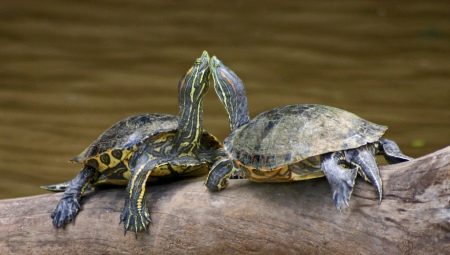
Rub-eared turtles are one of the most beloved pets, yielding, of course, to cats and dogs. Many owners may not notice the fact that individuals have practically no desire to reproduce, and sometimes even mate. If you want to become a happy owner of several little turtles that look like amazing living toys, then you need to help your pets. For information on how to create suitable conditions for breeding, as well as how to care for the eggs afterwards, read the article below.
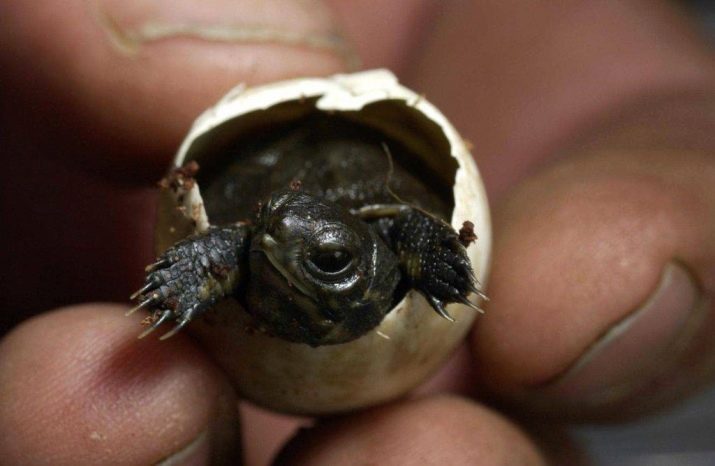
At what age does puberty begin?
In the wild, red-eared turtles begin to breed between 6 and 8 years of age. At home, this happens earlier: males breed at 3-4 years old, and females at 5-6 years old. It is impossible to understand how old the turtle is by its appearance. The statement that age is determined by the number of rings on the carapace or the curves of the scutes is erroneous. It all depends on where the turtle lived and what it ate. Nevertheless, the age can still be determined. This is done by measuring the length of the shell: the length of the shell in sexually mature males is about 11 cm, while in sexually mature females it is about 15 or 17 cm.
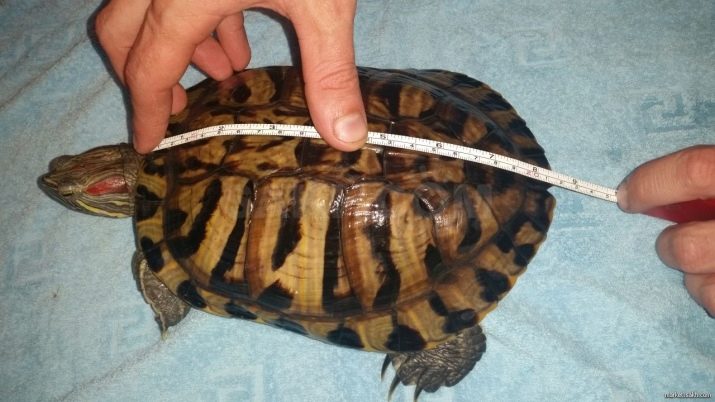
For breeding, it is recommended to take individuals of both sexes 5 years of age (if the year of hatching of the animals is known).
It must be remembered that too young individuals will not mate. Also, old animals will not do this. You can not use sick animals or individuals with developmental anomalies and have recently undergone treatment for mating.
How to distinguish a female from a male?
Females from males are outwardly practically indistinguishable from each other due to the fact that these turtles lack external sexual characteristics. To understand if there is a male or a female in front of you, you need to focus on the following points.
- Tail... In males it is long, in females it does not differ in great length. Also in females it is more graceful.
- Cloaca... The cloaca of males is located in the lower third of the tail, the shape is a longitudinal strip. In females, the cloaca is closer to the base of the tail and has the shape of a star.
- Claws... Males have long claws on their front legs, while females have short and squat claws.
- Carapace... The shell of males is narrower than that of females. Also, in the lower part, the shell of females is flat, while in males it is concave.
- Dimensions (edit)... In general, males are smaller than females.
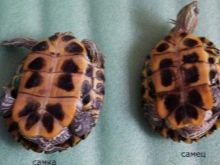
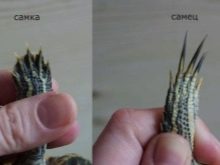
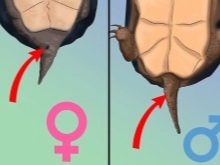
It must be remembered that it is possible to determine the sex of an animal only after it is one year old.
How is the mating season?
Mating in captivity can take place all year round. However, most often it occurs in the spring: turtles actively mate from March to May. The easiest way is to plant a female with a male living in a separate enclosure. If the reptiles live in several individuals in one aquarium, and you notice that one of the individuals is showing attention to the other, then it is recommended to plant them separately.
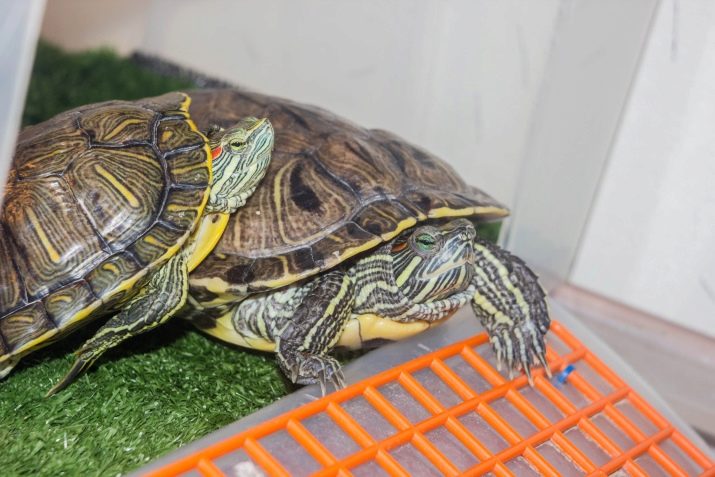
Usually, the male is the first to show attention to the female he likes and begins to care for her. A clear sign of this behavior is that the male swims in front of the female with his tail forward. With the claws of the front paws, he touches the muzzle of the female. Often, males can fight for the right to a female. In the process, they can often damage each other. Females also signal that they are ready to mate: they stop eating, but become more active.
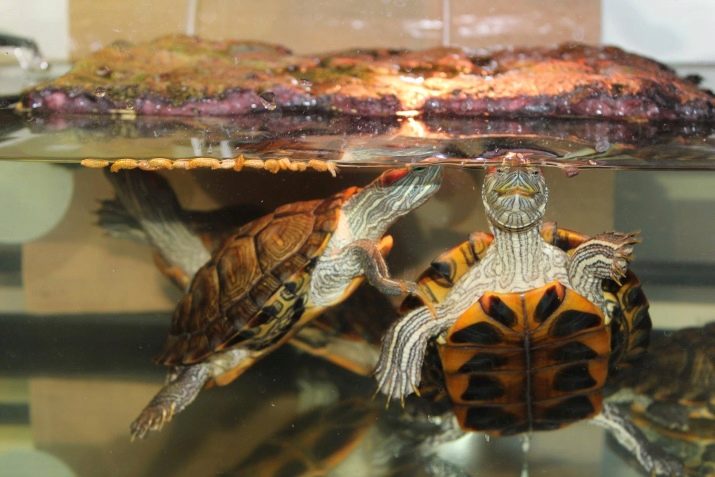
During the mating season, the male and female are in contact with their shells. This happens both in water and on land. Mating itself takes place in water and lasts from 5 to 11 minutes. The male climbs onto the female and presses her to him with long claws. Often, the male may not let go of his partner for a long time. Thus, from the assertiveness of the male, the female can choke and die. To prevent this, you do not need to overfill the aquarium with water. The water level must be maintained at around 10 to 12 cm. The optimal water temperature is considered to be around 26 degrees.
Animals should not be disturbed during mating, and even more so, they should not be taken out of the aquarium. The aquarium should be quiet and warm. If these conditions are not met, then mating will not be successful, and the female may never get pregnant.
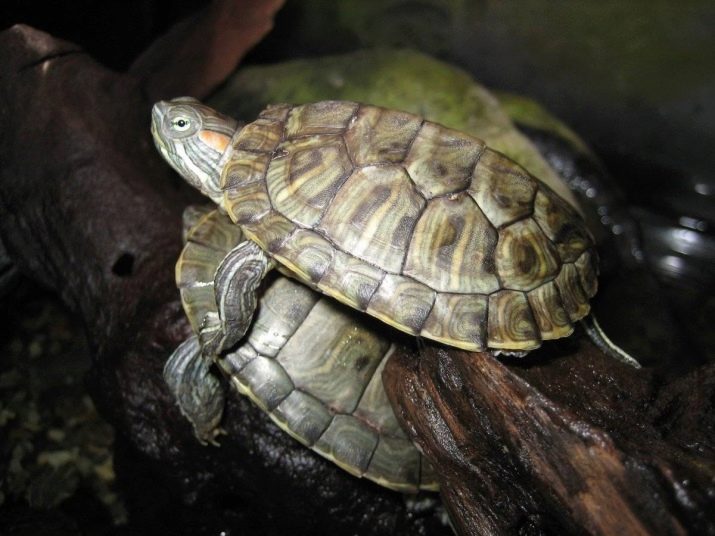
In the presence of good conditions and adequate nutrition, females can begin to mate several times a year and lay eggs the same number of times. At home, this usually happens rarely.
Features and gestational age of the turtle
Knowing that a female is pregnant can be difficult at times. But this can certainly be determined by her behavior already in the late periods of pregnancy. A pregnant female rarely enters the water, preferring to bask under a lamp. You can find out that the animal is definitely pregnant 2 weeks before laying the eggs. It begins to walk on the sand, touch it with its paws and snort.
During pregnancy, the female is recommended to be placed in a separate aquarium. The male or other individuals can harm her or future cubs. During pregnancy, the female should eat well and well. Her diet should include elements such as phosphorus, calcium, and vitamins.
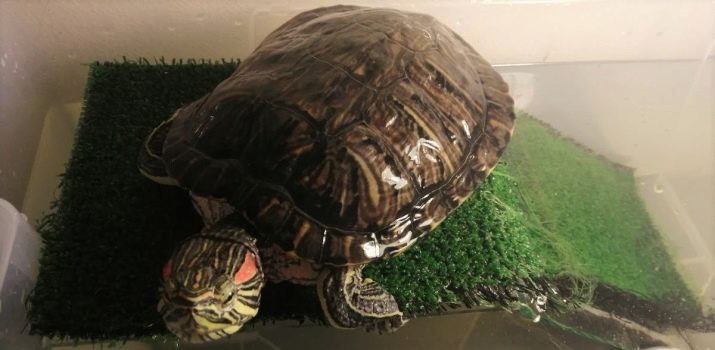
A turtle's pregnancy lasts almost 2 months (about 60 days). After this period is over, the turtles lay their eggs. As you know, they do it in the sand. Therefore, in the aquarium, you need to build an impromptu shore and make a hole in it with a depth of 10 to 15 cm. If it is not there, the animal will lay eggs in the water. The eggs will need to be removed within an hour. If this is not done, the embryos will die from lack of air.

Before laying eggs, the female digs a hole, and during laying, she straightens each egg with her hind legs. After the process is complete, the animal buries a hole and moistens the surface of the sand with urine. It no longer cares about its cubs.
After pregnancy, the female must be placed in a separate enclosure. During this period, she is weak, other individuals can cripple her. With good nutrition and rest, she will recover quickly.
Egg care
The number of eggs laid can vary from 5 to 20 pieces. They look like small balls with a diameter of about 3 or 4 cm, their shell is hard, but usually covered with a leathery shell.
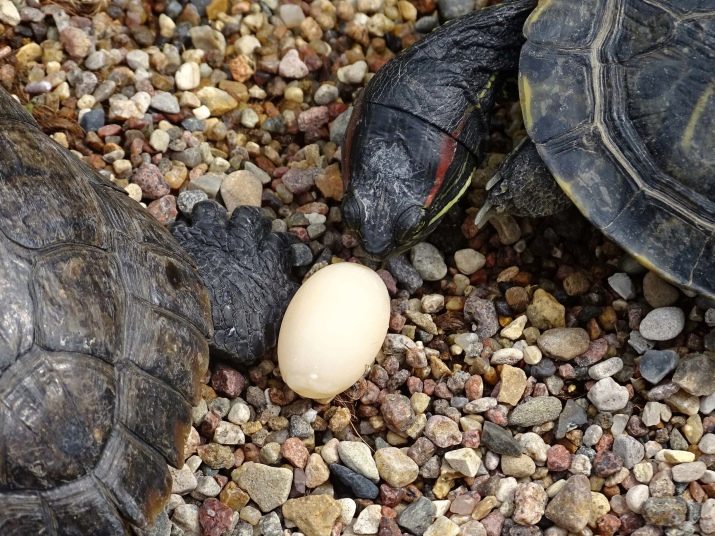
It is important not to confuse eggs with and without embryos. Some females living alone may lay eggs and bury them as if they were hatching turtles. But it is worth remembering that even in a mating female, not all eggs can be fertilized. To do this, they can be illuminated with an ovoscope or a flashlight.
It is better not to keep eggs in the aquarium, but to purchase a special incubator for this.... Some breeders keep their eggs in jars of sand, maintaining a certain temperature (30 degrees) and humidity (70%). Be sure to remember the masonry date. It is best to mark it on the eggs themselves, but this requires great care. It is also necessary to make a mark on the eggs in order to remember in which position they were in the clutch.
The position in which the eggs were in the clutch must not be changed when transferred to the incubator. Some attribute this to the fact that it will be difficult for turtles to get to the surface after hatching, and some argue that the embryo can simply burst. It is noticed that when the eggs are turned over, most of the offspring really die. In general, the incubation period for such turtles takes from 2 to 5 months. But usually babies begin to hatch about 100 days after the eggs have been laid.

It must be remembered that at home the instincts of red-eared turtles are dulled. They may be more lethargic, slower, and also lose interest in mating. It will take time and a lot of effort to push such individuals to reproduce.








